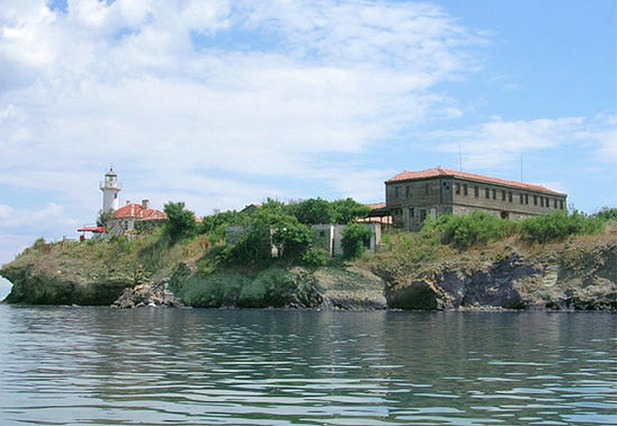Hidden between the capes of St. Anastasia and Atia lies St. Anastasia island. The biggest island on Bulgarian territory is situated only 6.5 km away from the coastal city of Bourgas. Its area is 8.5 decares and the height is 12 m. St. Anastasia appeared as a result of a volcanic eruption.
The island has intriguing history. Numerous legends have been told about it.
Objects from the 5th and 4th centuries AD found there show that human activity on the island started long time ago.
A monastery functions there, as well. According to historians, the monastery was set up as far back in time as 1553.
Apart from travelers, St. Anastasia attracted pirates. Legends of hidden treasures still tickle the curiosity of visitors today.
In 1924, the island was turned into a prison and the thick monastery walls started hosting a detention center for political prisoners. In 1944, the prison was closed down and the building became a museum. St. Anastasia changed its name to Bolshevik island and some elderly Bourgas residents still call it that way. When democratic changes took place in 1990, the island gained back its old name.
Today, the monastery functions as a hotel. The only ‘luxuries’ to be enjoyed include electricity and running water.
The old lighthouse of St. Anastasia appeared in 1889. The lighthouse was installed on a metal pillar, rising 40 m above the water level. During fair weather, its light could be seen from a distance of 10 miles. In 1912, the construction of a new lighthouse began in the northern part of the island. It still functions.
Since 2001, St. Anastasia has been recognized as a nature and archaeological preserve. If its landmarks are preserved and developed, the island has the potential to turn into one unusual tourist destination.
If you want to visit St. Anastasia, you need to find a boat or ship owner willing to take you there. Such trips are organized in Bourgas, Nessebar, Pomorie and Sozopol.

